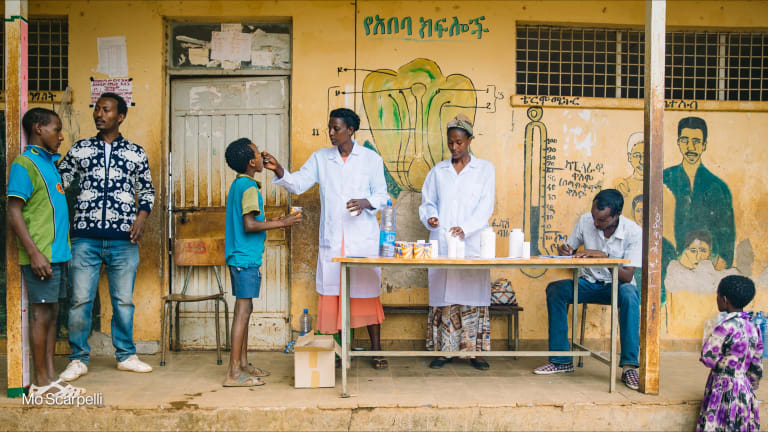
Despite a slight bump in grants, philanthropic funding to mitigate the effects of climate change remained a tiny slice of what funders spent overall globally last year, according to new data published Monday. The findings reinforce perceptions that the philanthropy sector is failing to tackle climate change during what scientists have warned could be the last window of time to stave off its worst impacts.
But there is still reason for optimism and plenty of funding opportunities, climate philanthropy experts told Devex.
Before COP 27, join Devex and a panel of experts, including Moazzam Malik of World Resources Institute, to get ahead of the discussions and hear about the key issues to watch. Register now.
“The nice silver lining that we saw was the big jump in philanthropic giving that happened last year relative to what we saw in 2020,” Surabi Menon, vice president of global intelligence at ClimateWorks Foundation, said in an interview.
ClimateWorks, a nonprofit, published a report Monday that said philanthropic foundation funding for climate change mitigation more than tripled between 2015 and 2021, growing from $900 million to $3 billion. During that same period, the number of grantees receiving climate change mitigation funding nearly doubled from 1,400 to 2,775. Giving to climate change mitigation increased by 25% in 2021, outpacing an 8% increase in overall philanthropic giving for the year, the organization said.
Despite the gains, the overall needle didn’t budge. The most recent ClimateWorks report echoed its assessment last year: Climate change mitigation funding remained less than 2% of global giving, which stood at $810 billion in 2021.
It is critical that the sector does more, said ClimateWorks President and CEO Helen Mountford.
“Philanthropy needs to break through the 2% funding barrier if it is to do its part to keep the world aiming for a 1.5 degree Celsius future,” she said in a statement, referring to the threshold beyond which scientists say the effects of climate change could become catastrophic. “A 25% annual increase in giving is encouraging, but philanthropy needs to accelerate its efforts even more and move more funds faster to the places that need them the most to give people and the planet a fighting chance.”
Mountford made a similar call to action earlier this year when she urged philanthropic organizations, governments, and corporations to make good on pledges made at last year’s 26th United Nations Climate Change Conference.
Some foundations are stepping up. In July, The Rockefeller Foundation said it would put climate change at the forefront of all programmatic, operational, and investment strategies. The Bill & Melinda Gates Foundation is prioritizing climate-resilient food production in Africa. Open Society Foundations has brought on a climate justice director to lead its efforts to implement the Paris climate accords and the Sustainable Development Goals on climate action.
In recent months, foundations also have played key roles in forming alliances and coalitions focused on spurring investments in renewable energy and reducing methane emissions, and supporting Indigenous peoples and local communities to fight climate change.
Those kinds of collaborations between foundations “going after big targets” have been “encouraging,” said Menon, who is an author of the ClimateWorks report. Through these partnerships, foundations can leverage limited resources to catalyze investments from other sectors, she said.
“Because philanthropy can only do so much,” she said.
Still, foundations and individual donors could be doing much more in Africa, which is among the regions expected to be hit hardest by climate change, said Saliem Fakir, executive director of the African Climate Foundation based in South Africa.
The top regions to receive climate change mitigation funding in 2021 were the United States, Canada, and Europe, according to the ClimateWorks report. And even as funding to Africa increased by 50% and doubled in Latin America between 2020 and 2021, the two regions combined represented less than 10% of total foundation funding in 2021, the report noted.
It’s “quite criminal” that more resources aren’t being directed to Africa and “the irony is $1 can do a lot here,” Fakir told Devex.
Climate adaptation and resilience, along with efforts focused on land use and reducing agriculture emissions, are areas that are especially ripe for philanthropic funding and other investments, he said.
The African Climate Foundation, which counts The Rockefeller Foundation among its funders, wants more resources to flow to Africa and to African-led organizations that are embedded in communities, Fakir said. Those groups have a better sense of what local people will need when climate adaptation, resilience, and green energy projects are implemented, he said.








